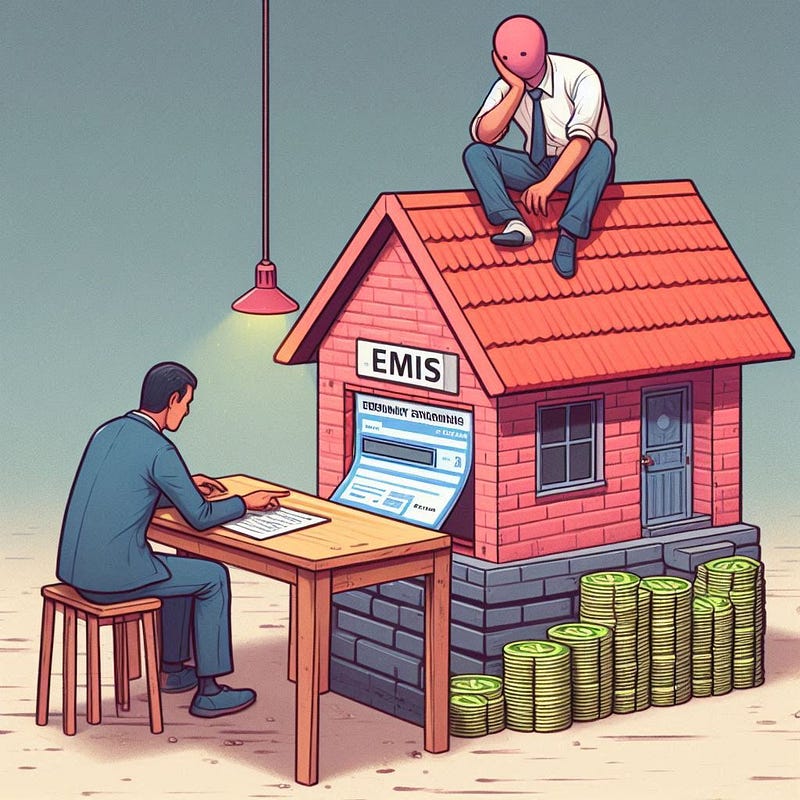Mutual Funds Strategy 119: Invest in REITs or Buy Real Estate with a Loan?
Not just in India, but people around the world love to invest in land. In India, the obsession is a bit more, primarily because the land is a tangible asset and people here are vulnerable to falling into “intangible” product scams.
“Double your money in 1 year”, “10% monthly returns guaranteed”, “Make 1 crore in 1 year with 10 lakhs initial capital”. These are some of the fancy intangible financial fraud schemes circulating in the market. Believe me, people fall for this, and when they get defrauded, they end up telling 10 other people. The result, people end up believing that all intangible financial schemes are Ponzi, and something tangible like a plot of land, an apartment, or a villa/house is much better for the long term.
I am here not to tell you that buying a house is a bad thing if you wish to stay in it. It is just that, from an investment perspective, it doesn’t make any sense. Let me prove it with some numbers.

Firstly, I need to know if you love the real-estate sector or not, because if you do — then there is an interesting product called REITs (much more on that soon). Secondly, is the decision to buy a house for status purposes, the social calling that you have “made good in life,” or as a utility and freedom, as everyone wants a roof on top of their heads.
We will start comparing the decision to buy a house via EM (still the most preferred way to fund this asset class). Due to the costs of apartments, land, and villas, only a handful can buy them with full cash payments; the rest of us have to depend on credit/loans to fund them.
Assumptions
- Cost of Apartment purchase = 1 crore
- The housing loan interest rate is: 10%
- Period of repayment is: 25 years

You end up paying 2.73 crores in 25 years for something that is worth 1 crore rupees today. To fund this, the monthly EMI works out to be Rs 90,870.
Let us hope this asset is worth 10 times after 25 years (best case expectation), that means if you plan to sell this apartment, you will get Rs 10 crores in cash. In that case, your 1 crore has gone up 10x to 10 crores, but your actual cost of acquisition is 2.73 crores, and the final absolute returns = 10/2.73 = 3.66x.
We would also need to know if the same investor parked EMI money in an SIP, and how much it would have grown. The calculation is pretty simple, any online SIP calculator would get you the data.

If you invest Rs 90,870 for the same tenure of 25 years with an annual return assumption of 13% — you are looking at 20.64 crores as total portfolio value.
2.73 crores has grown 7.56x times to 20.64 crores. Instead of a 10 crore house, you have 20 crore worth of money in your account. If you are not a real-estate fan, you have got the answer whether to buy a house or invest in SIPs by now. In case you love real estate, continue reading.
Expecting a crore house to go to 10 crores in 25 years is high by any standards. Apartments rarely appreciate that much, as no one would go and buy a 25-year-old apartment at the same market rate as a new apartment. The purpose of this exercise is to show you that when the power of compounding works for you, it grows your capital, and if it works against you, it eats your capital.
With the launch of REITs (Real Estate Investment Trusts), you can entrust an AMC to invest in the real estate space. If you love the real estate sector, then you can start an SIP in the REITs sector and have the relief that you are investing in something like a property. You can almost compare it with the digital gold ETFs vs physical gold.
As you are aware, there are two income possibilities in the real estate space
- Rental Income.
- Capital Gains.
The primary objective of the REITs would be to own, lease, or operate commercial properties, office buildings, residential apartments, malls & amenities, land that could give either of the two income. Just like any other mutual fund, REITs deduct the operating charges and pay out the profits to their investors.
The REITs investment opportunity via mutual funds is relatively new in India and this sector is poised to take off. An investor gets the following advantages when opting for a REIT fund instead of direct real-estate investments.
- Liquidity: Selling a real estate property, land, or building is not that easy. Even if you have a great asset, you may not be able to convert it into cash that easily. Since REITs are mutual funds, liquidity is much better as many investors buy/sell at the same time.
- Ticket Size: Buying a physical property, land or building requires huge initial capital. Usually, an investor opts for a commercial or housing loan to acquire the property. This not only increases the cost of acquisition, but could create further troubles in the future if the loan goes bad. REITs, being a mutual fund, can be purchased as SIPs based on the investor’s active income.
- Location: In real estate, location is everything. It is not practically possible for an individual investor to acquire the best piece of land due to many factors. Since REITs are mutual funds, they would have the economies of scale to find, research, and invest in the best locality every time.
The advantages do not end here, but at present, there are no historical data to show for the 10-year, 20-year, or 30-year periods, as the segment is relatively new. With time, this sector will gain a lot of popularity, and investing in digital real-estate will become the new normal.
If you liked this article, consider sharing it with someone who could benefit from this.
Read my latest book — How to join the top 1% options traders club from Amazon
